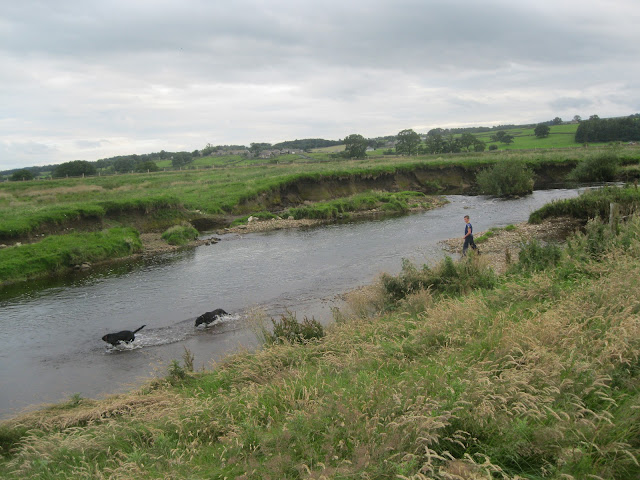Although not a specifically church event, local Methodists Christine Bell and Judith Allinson made good use of Grassington Methodist Chapel and its schoolroom when Christine invited Judith to come and run a Lichens workshop for the Botany Group of Upper Wharfedale Field Society on 24th July.
"How many lichens do you think there are in Britain?" asks Judith.
Answer "Almost 2000. And about 1000 in Yorkshire, as recorded by Prof Mark Seaward. A lichen is an association of a fungus and an alga. The fungus is always different for each lichen, but many lichens have the same alga. Algae contain a green pigment and make sugar for the lichen using the sun's energy."
Under a hand-lens lichens have beautiful shapes
After the morning session and lunch the group set of for Grass Wood.. but first we are sidetracked by the wall outside the church.
Passers-by stop to ask "What is going on?"
Judith lends a hand-lens for one to try. "Hold the lens close to your eye. Then move your finger nail until it is in focus and clear"
At last we reach the Yorkshire Wildlife Trust Reserve of Grass Wood.
We carry out a survey organised by OPAL . We can learn much about the air quality from the lichen species. This survey records species that are tolerant or sensitive to pollution by nitrogen oxides (from car fumes, and fertilizers)
We look at lichens on Willow and then on Oak. The wood is quite shaded and there are not too many species. (Which makes it easy for beginners...)
Then we move across the road to where the trees are more spread out so there is more light.
On the branches of an oak we are rewarded by finding the "fruticose" lichen Ramalina farinacea sometimes called the Farinose Cartilage Lichen
Well, we did not see the 2000 UK lichens, nor the almost 1000 species as recorded by Mark Seaward in Yorkshire, nor even the 346 species on the Checklist for 5km radius of nearby Malham Tarn (Seaward and Pentecost) .. (Of which about 48 may be extinct in the area) but we did name 15 different species.. A good start.. and I think most of the group will be happy if they go away remembering three.
To the Group "Which three can you remember?"
| Latin Name | English Name |
| Arthonia radiata | |
| Aspicilia calcarea | Calcareous rimmed lichen |
| Caloplaca flavescens | |
| Cladonia pocillum | Carpet Pixie-cup |
| Collema auriforme | Jelly Lichen |
| Evernia prunastri | Stags horn or Oakmoss |
| Hypogymnia physodes | |
| Lecanora chlarotera | |
| Lecidella elaeochroma | |
| Lepraria incana | Blue-grey Dust Lichen |
| Melanelixia fuliginosa - Parmelia glabratula | Brown Parmelia |
| Parmelia saxatilis | (Crottle, Stony rag) |
| Ramalina farinacea | Dotted ramalina, The dotted
line; Farinose cartilage lichen |
| Verrucaria nigrescens | Black Verrucaria |
| Xanthoria parietina | Bird perch lichen |































